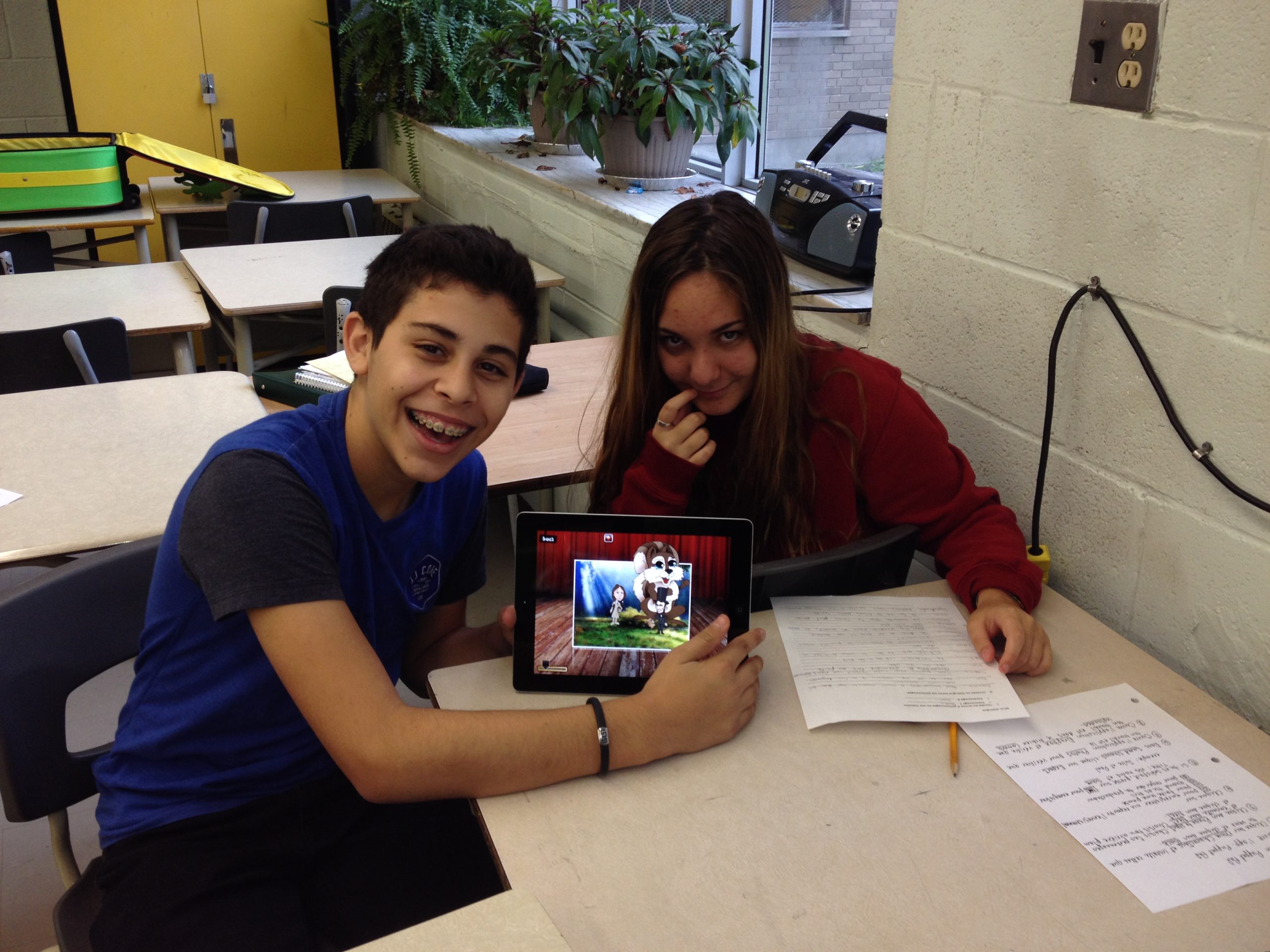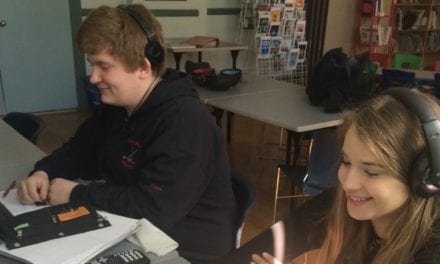I started running again at the end of August. Now, for those of you who don’t know me well (or at all), this may not sound like a big deal. I mean, I’m not a sloth. I’m a relatively fit individual who tries to stay healthy by working out regularly and watching what I eat. However, I’m not what one would describe as an athlete and certainly not a “natural” runner. I wouldn’t even say that I have an aptitude for the sport. I don’t glide effortlessly through the dewy country air with an unbearable lightness of being. No. My feet hit the pavement with an audible thud and my legs move with a heaviness that I try to conceal. For me, running is a struggle. It’s hard, sometimes it hurts, BUT when I’m done I feel lighter. I feel a sense of accomplishment that pushes me to continue.
So…what does all of this whining have to do with education? Well, a lot actually. The question I ask myself as I’m plodding along, hoping that my lungs don’t explode is: Why am I doing this? And more pressingly, why do I keep doing it? These cries of anguish got me thinking (and my neighbours too) about what motivates me to learn, and in turn, how and why the students I’ve tried to teach over the years are motivated to learn things that are potentially difficult for them.
In my opinion, one of the great equalizers in the classroom, if not in life, is motivation. But how do we as parents, educators and students harness its power? How do you motivate yourself or others to want to learn something and to keep on coming back for more? The literature in the field is ripe with theories. My particular area of interest is motivation as a variable in the acquisition of a second language or language learning motivation (LLM). So bear with me, fellow FLS/ESL teachers, as I try to make the connections between what motivates me as a learner, what I have observed when teaching kids a second language, and some of the research that supports this dialogue.
Here are my top 4 motivators for learning:
1. A goal. Not a big one, just something to set my sights on. My current goal is to complete a weekly “couch to 5K” running program by the end of October and then compete in a fun run for charity. Having to prepare for my goal gets me moving, and knowing that the goal is attainable pushes me to not only make an effort but to sustain that effort over time. In a classroom context, goals can be individual or defined by the group. They can be personal in nature or related to a learning situation. According to theorists, goals help to direct our attention toward relevant activities, they encourage students to regulate their effort, and they positively affect persistence (Locke and Latham, 2002). Of course, having too lofty a goal can backfire. For example: I’m finally going to learn to speak French this year and ace my finals. Baby steps people!
2. Regular, positive feedback. I’m not only talking about corrective feedback here. Right now, I don’t have a running buddy. I have to rely on the kindness of Robert Ullrey (see below) and his free podcasts to get my fix of the warm and fuzzies. He provides just the right combination of enthusiasm, running tips and jazzy music to keep me going. In my experience, just being an accessible, attentive and enthusiastic teacher, who provides a safe learning environment, garners points for positively affecting the motivation of students. If we revisit the notion of goal setting, feedback has been proven critical in showing progress and influencing performance. (Locke and Latham, 2002). Feedback encourages students to think about what they are doing in order to make adjustments, get better and stay invested. In a quick exchange with a physical trainer two weeks ago, I learned that I was a classic “heel-striker” and that my running form had a critical flaw that was causing me some pain. So, I changed my stance and I’m now back on track….literally.
3. A little success is always a good thing. Three years ago I completed my first 10K. This small victory has given me the courage to take on more athletic pursuits. I suppose you could classify this type of causal thinking under the attribution theory of motivation. Dörnyei (2001) hypothesizes that the reasons to which students attribute their past successes and failures in learning a language impact and shape their motivational outlook. In a school setting, these reasons (or causes) include: ability, effort, luck, task difficulty, mood, family background, and help from others. The locus of control is super important here. If students attribute failure to something they perceive to have little control over, like natural ability, their motivation for learning decreases. For a learner then, maintaining a positive self-image and a belief in his/her potential is critical to learning. In the language classroom, experiencing small successes also helps to increase self-confidence in a learner’s ability to communicate and lessens the anxiety of making mistakes.
4. Choice. Making choices gives me the feeling that I’m in control of my life. Nobody forced me to start running again. I’m the captain of my destiny! Of course, being cajoled into learning a second language is not ideal – but that’s what most of the FLS teachers I know deal with in the real world. Providing students with choice within the context of the classroom, as well as in the design of our courses and lessons is a good start. I would be remiss however, if I didn’t include a nod here to the theory of self determination and how it applies in a larger sense to motivation and learning. To be self-determined implies that learners have a choice in terms of their own actions…in both the initiating and regulating of what they’re doing. Another word for this would be autonomy. Deci and Ryan (2000) distinguish between two types of motivation: intrinsic and extrinsic. When we are intrinsically motivated to do something it is for the internal rewards we get out of it: happiness, satisfying our curiosity, the shear joy of running, etc. Extrinsic motivators might include things like: praise from a teacher, good grades, well-defined calves, etc. What theorists suggest is that when self-determination is shaped by intrinsic motivation and autonomy, that’s when the learning outcomes are the most beneficial. Which brings us full circle: How do we get students to motivate themselves to learn?
I have to admit that motivation is both an ill-defined and complex concept. LLM interplays with a myriad of factors including attitude, aptitude, context, content, and the list goes on. I’ve only tapped into a few of these. I’m currently working on compiling concrete how-to’s, strategies, tips or anecdotes that have to do with intrinsically motivating students. And you, how do you handle motivation in your classroom?
I’ll see you after my run!
Kristine Thibeault
References (for your reading and listening pleasure)
Locke, E. & Latham. J. (2002). Building a practically useful theory of goal setting and task motivation: A 35-year odyssey. American Psychologist, 57 (90), 705-717. Retrieved from http://citeseerx.ist.psu.edu/viewdoc/download?doi=10.1.1.126.9922&rep=rep1&type=pdf.
Deci, E. L. & Ryan, R. M. (2000). The “What” and “Why” of goal pursuits: Human needs and the self-determination of behavior. Psychological Inquiry, 11 (4), 227-268. Retrieved from
http://www.groups.psychology.org.au/Assets/Files/The-what-and-why-of-goal-pursuits.pdf.
Dörnyei, Z. (2001). Teaching and researching motivation. Harlow, England: Longman. (Sorry – this one is not available online)
Dörnyei, Z. (2003). Attitudes, orientations, and motivations in language learning: Advances in theory, research, and applications. Language Learning, 53 (1), 3-32. Retrieved from
http://www.nottingham.ac.uk/~aezweb/research/cral/doku.php?id=people:zoltan.
Robert Ullrey’s Couch to 5K Podcasts (http://www.c25k.com/podcasts.htm)






What a great post. I love the way you made the link between what you are doing and what goes on in the classroom. One thing I think you omitted was seeing a purpose in what you are doing. You are motivated because you not only have goals but also understand the real world applications of what you are doing – better health, a chance to contribute to the community by participating in a charity run. You can make the connection between what you are doing and your own life. The more we can bring authentic situations into the classroom, the more students will be able to make these connections and then, hopefully, will see more of a purpose for learning.
Thanks Susan. And, you’re absolutely right! I hate to admit that I shaved my original top 6 motivators down to 4. After much consideration (and for the sake of brevity), I left two factors out: the opportunity for reflection, AND engaging in a meaningful task. In L2 learning, the notion of an authentic situation is oh so relevant. We’re not just teaching a language. We’re often called upon to be ambassadors for an entire culture…one which sometimes extends well beyond a student’s borders or imaginings!
I hear you! And I can relate to everything you say. Whatever the challenge, your four points apply: whether you want to lose weight, start a business, run a marathon, or learn a second language. And we also have to learn to recognize those nagging little voices inside our head that tell us deeply and with certainty: “I can’t do this, this is not for me, I’m not [fill in the blank] enough”. My experience is that little victories and positive feedback are sometimes not enough. Sometimes, deep-rooted self-destructive beliefs get in the way of success. I’m not sure how well equipped we are as a teacher to see them in our students and act on them directly. That’s probably why a variety of initiatives, unrelated to school subjects, that help build student confidence should be part of the environment and the choices students have.
Go Kristine, GO! 5km, you can do it! Believe it.
Christiane
Really enjoyed reading your post and your reflections Kristine. And running alongside you all the while, I feel I got some exercise just reading it all. Wow, nicely done! But actually, darn! that I didn’t get in here to comment before Susan thought of something different, and then you came back to add a few other points, because when reading the first four, as revealing and as true as they were, they didn’t hit on how I used to try to motivate my students… and myself… when I was teaching. For me it was always about trying to stretch one’s imagination, not to leave reality but to fold it all inside out and to have fun with it, to gain perspective, to go out on the edge, to experience something different. Perhaps I did it mostly for myself, who knows, but I think the students used to really enjoy the way one year the classroom was a time machine, or a spaceship, or a university made up of freaky famous buildings, or a newspaper where all of us were journalists working the schoolyard for stories, all the while stuck inside those four windowless walls. It might have been because I was teaching mother-tongue English and not ESL, but motivation was more the kick start for learning than the motor or the mechanics. But anyway, I think you kind of said it in your last comment: that the opportunity for reflection and meaningful engagement helps learning, and that we as teachers sometimes extend ourselves and our classrooms well beyond student borders and imaginings. Full circle here too though, because what the students can come up with when released is often what motivates us too, to continue to teach and to learn with them.
Kristine – your post is the first one I ever used Diigo on! Anyway, I laughed a lot while reading this, thanks for that! I appreciate the distinction between intrinsic and extrinsic motivation. I have always felt that as we get older, the intrinsic becomes more important. But then I read your email today about your son and Storybird – sounds like he was intrinsically motivated to finish that story! Note to self – now what?
Great insights. In the dance classes I teach I see a lot of people with not a lot of natural ability for dancing. Even though they do it for fun (and not profit :-), it is difficult to keep them motivated when they clearly are not getting it. Especially when other people ARE getting it right next to them. Praise and personal goals are what I use to keep such students motivated – I give them positive feedback when they attempt what I am asking for and I also give them a personal goal that they can work on that might bring them a step closer to actually dancing. I also encourage people to let me know what their reactions are during class and I make sure they get one-on-one time with me or my co-teacher. Outside of the school setting, where grades and pass/fail are no longer the motivators, you can really see which learners have the perseverance to withstand failure and keep going for very distant rewards.
A really nice capsule of issues involved in motivation. As the hours of daylight diminish at this time of year, the effort to “do” becomes a little harder for me. Though I absolutely agree with the importance of intrinsic motivation which makes things easier, one can’t ignore the role of “will” in getting things done. Nothing succeeded like success. Small successes build upon themselves and momentum must be sustained. i think I’ll go for a run this afternoon.
I love the running analogy. I can relate to your description of not being a “natural” runner. I similarly describe my kayaking skills…When it comes to paddling, I’m a very good swimmer.
I would often see people running and lament that it is because they are “runners”. I avoided running because I didn’t consider myself one of these. I have made several attempts at becoming a runner, but I quickly lost my motivation. Recently my wife (who is a runner) brought it to my attention that when I do run, there are people who will undoubtedly see me as a “runner”.
Making the leap to education, how many of our students simply don’t see themselves as “learners”. I don’t learn because I’m just not a “learner”. As an FSL teacher, I have too often heard, “I can’t learn French because I’m not French”. A person doesn’t need to be French to learn it, any more than I need to be a runner to run.
This is where I see reflection or meta-cognition playing an important role in a person’s motivation to learn. The person thinking, “I am not bilingual” (or not a techie, or not a math wiz) will certainly be less motivated to learn.
So here is my food for thought. How do we give feedback that is not just positive, but challenges learners to think about themselves as learners?
The feedback I received about running was not necessarily complementary, but it did bring me to explore my perception of running. So now, I’m an occasional runner because it helps me to think. Who would have thought?